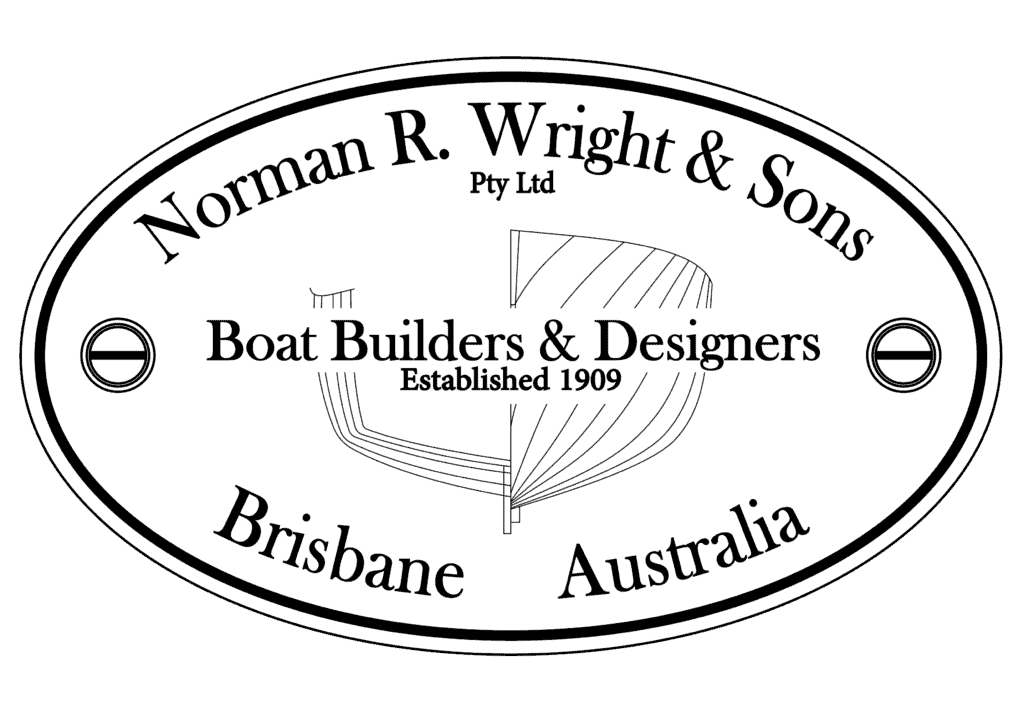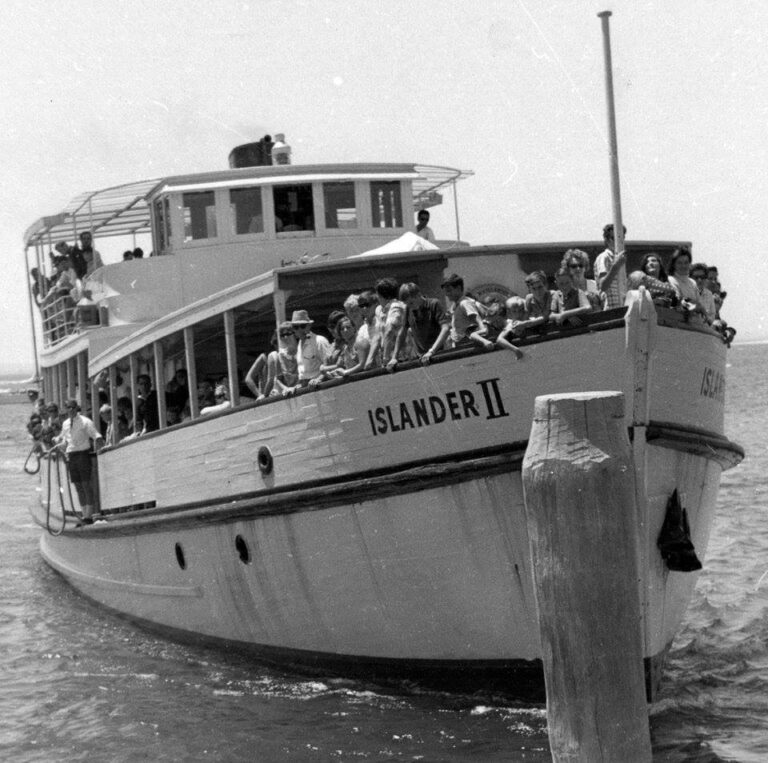Funny how coincidences work. Last week I was in Sweden at the invite of Volvo Penta with a small group of Aussie marine industry types. On a bus trip from Stockholm to Gothenburg I sat down to write a piece from the archives on the trading vessel Leisha, one of the last vessels to be built at the Newstead yard in 1935. I sat next to an owner of a Rottnest ferry operation and got chatting about their current boats (aluminium catamarans) and I mentioned that at least two Norman Wright boats that we know of became ferries for Rottnest Island. I pulled up the online archive and we began swapping stories and photos of the old vessels – hence the change in tack. Leisha will have to wait for the next newsletter!
Islander I
The first of the vessels that made it to WA was the ex Navy Fairmile 826 built in 1944. https://archives.wrightsons.com.au/archives/1944-1 which became the Rottnest Islander.
Four business partners from WA purchased ML 826 in November1947 at a Navy surplus auction. The following is recalled by the son of Emmett McGann, one of the original business partners:
“There was a purchase the following week of 4 Hall Scott engines, auxiliaries, light fittings, and all the necessary bits and pieces to put her back together again. She was moored near the Raffles in the Swan River for over 12 months while the reassembly occurred by the partners and friends and then she went to Rottnest with the whole tribe to celebrate the rebirth.
The Ferry trade began in 1949 having had the licence for 285 passengers issued. We ran the engines at 1000 rpm in the river and 1200 rpm in the ocean, giving a 2hr trip as opposed to the 3hr of the coal fired steam vessel “Zephyr”.
The Hall Scott’s performed well and the only spares we purchased from the USA were camshaft drive chains. In later years with added competition, we often increased speeds in the ocean to 1400 rpm (14 knots).
After 10 years we put in the 2 spare engines and continued running them until the vessel was sold.”


The distinctive lines of a Fairmile. In construction at NRW’s Quay St yard, and converted to ferry on the Swan River.
Up until this time, her superior speed, given her long narrow design and the V12 Hall Scott petrol engines (yes, unusual to be allowed for a passenger ferry – but that’s another story!), meant she had little competition on the Rottnest run, though as described in a 2016 interview with The West Australian, former skipper of the Islander Harold (Mick) Maxwell said: “she would roll in her own shadow…. You had to feel the pressure on her rudder and react or you were in deep trouble. Often in a following sea, the Islander would be taking water over the bow as she nosed in and you had to be very experienced to handle her.” Indeed the incessant vomiting is a common theme by those reminiscing on the trips. (Aside – thanks to Tony Maxfield, Mick’s son, via whom many of the old photos here have circulated online.)
The increased competition came initially from the Triton in 1960 – a converted US Navy Air Sea Rescue vessel, and the locally launched twin-hulled Katameraire (Kat) whose stability was preferred despite being slower. The fierce competition appears to have sparked a number of suspicious incidents: the Triton was sunk at her Fremantle moorings before commencing her service; Islander flooded in 1961 and was set alight in 1963; and the Kat lost its licence to operate after an unlikely finding of being responsible for a collision with another vessel.
Islander continued her service under various incarnations of the “Islander” name and modifications until well into the 70’s.

After leaving the ferry service she was renamed Princess Royale where she operated out of Royal Harbour in Albany doing whale watching tours at least up until 1988. Unfortunately, whilst on return to Queensland she sank off Malabar NSW in bad weather on July 28, 2001.

Islander II
Captain Heath was the other NRW vessel to arrive in Fremantle where she was converted to a Rottnest Ferry and renamed Islander II.
Captain Heath was launched inn 1941 and served as a pilot vessel and light tender in Queensland during the 1940’s and 50’s. She was named in memory of Captain J. P. Heath, the first Port Master of Moreton Bay, and who planned the system of navigation lights and buoys. She was 107ft (second largest wooden vessel built in Qld at the time – the John Douglas was 108ft) and had a 330hp Crossley diesel engine. She had accommodation for 12 pilots and could steam at 11.5knots.
“This ship, which is a product of Queensland even down to the brass bolts and casings, well warrants the £17,152 contract price that the Government will pay for it,” he continued. “It is a fine piece of work, and a tribute to Mr. Norman Wright and the men who helped him build it.” (Quote from then Qld Treasurer c/- Courier-Mail).


Around 1965 she was purchased by Norman and Douglass Hunt, who now owned the Islander (and apparently converts to NRW boats….) They steamed her from Brisbane and it was noted “The boat will need some modification before it can pass underneath the Fremantle rail and road bridges. It is expected to be in service in time for the next Christmas holidays and will carry up to 400 passengers.”
After her Rottnest ferry days, she was converted to a prawn trawler. She sank in 1971 in the Gulf of Carpentaria and that is where she currently lies.



Photos – NRW Archives, Tony Maxfield, Qld State Archive, WA Museum.
As always, the complete NRW Archives are available online at:




